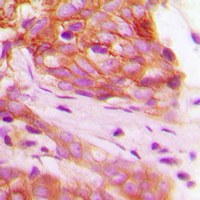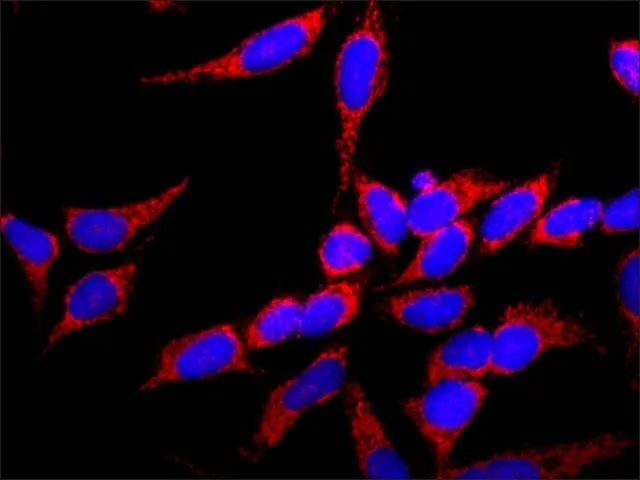FGFR1 antibody [M2F12]
GTX20829
ApplicationsFlow Cytometry, ImmunoPrecipitation, Western Blot, ImmunoHistoChemistry, ImmunoHistoChemistry Frozen, ImmunoHistoChemistry Paraffin
Product group Antibodies
TargetFGFR1
Overview
- SupplierGeneTex
- Product NameFGFR1 antibody [M2F12]
- Delivery Days Customer9
- Application Supplier NoteWB: 1 microg/ml. *Optimal dilutions/concentrations should be determined by the researcher.Not tested in other applications.
- ApplicationsFlow Cytometry, ImmunoPrecipitation, Western Blot, ImmunoHistoChemistry, ImmunoHistoChemistry Frozen, ImmunoHistoChemistry Paraffin
- CertificationResearch Use Only
- ClonalityMonoclonal
- Clone IDM2F12
- ConjugateUnconjugated
- Gene ID2260
- Target nameFGFR1
- Target descriptionfibroblast growth factor receptor 1
- Target synonymsBFGFR, CD331, CEK, ECCL, FGFBR, FGFR-1, FLG, FLT-2, FLT2, HBGFR, HH2, HRTFDS, KAL2, N-SAM, OGD, bFGF-R-1, fibroblast growth factor receptor 1, FGFR1/PLAG1 fusion, FMS-like tyrosine kinase 2, basic fibroblast growth factor receptor 1, fms-related tyrosine kinase 2, heparin-binding growth factor receptor, hydroxyaryl-protein kinase, proto-oncogene c-Fgr
- HostMouse
- IsotypeIgG2a
- Protein IDP11362
- Protein NameFibroblast growth factor receptor 1
- Scientific DescriptionThe protein encoded by this gene is a member of the fibroblast growth factor receptor (FGFR) family, where amino acid sequence is highly conserved between members and throughout evolution. FGFR family members differ from one another in their ligand affinities and tissue distribution. A full-length representative protein consists of an extracellular region, composed of three immunoglobulin-like domains, a single hydrophobic membrane-spanning segment and a cytoplasmic tyrosine kinase domain. The extracellular portion of the protein interacts with fibroblast growth factors, setting in motion a cascade of downstream signals, ultimately influencing mitogenesis and differentiation. This particular family member binds both acidic and basic fibroblast growth factors and is involved in limb induction. Mutations in this gene have been associated with Pfeiffer syndrome, Jackson-Weiss syndrome, Antley-Bixler syndrome, osteoglophonic dysplasia, and autosomal dominant Kallmann syndrome 2. Chromosomal aberrations involving this gene are associated with stem cell myeloproliferative disorder and stem cell leukemia lymphoma syndrome. Alternatively spliced variants which encode different protein isoforms have been described; however, not all variants have been fully characterized. [provided by RefSeq, Jul 2008]
- Storage Instruction-20°C or -80°C,2°C to 8°C
- UNSPSC12352203
References
- Energy-dense diets increase FGF23, lead to phosphorus retention and promote vascular calcifications in rats. Raya AI et al., 2016 Nov 14, Sci RepRead more
- Magnesium modulates parathyroid hormone secretion and upregulates parathyroid receptor expression at moderately low calcium concentration. Rodriguez-Ortiz ME et al., 2014 Feb, Nephrol Dial TransplantRead more
- Direct and indirect effects of parathyroid hormone on circulating levels of fibroblast growth factor 23 in vivo. Lopez I et al., 2011 Sep, Kidney IntRead more
- FGF23 fails to inhibit uremic parathyroid glands. Canalejo R et al., 2010 Jul, J Am Soc NephrolRead more




![WB analysis of extracellular domain of human FGFR1 (aa22-376) using GTX83370 FGFR1 antibody [3D4F7].](https://www.genetex.com/upload/website/prouct_img/normal/GTX83370/GTX83370_20170912_WB_w_23061322_900.webp)
